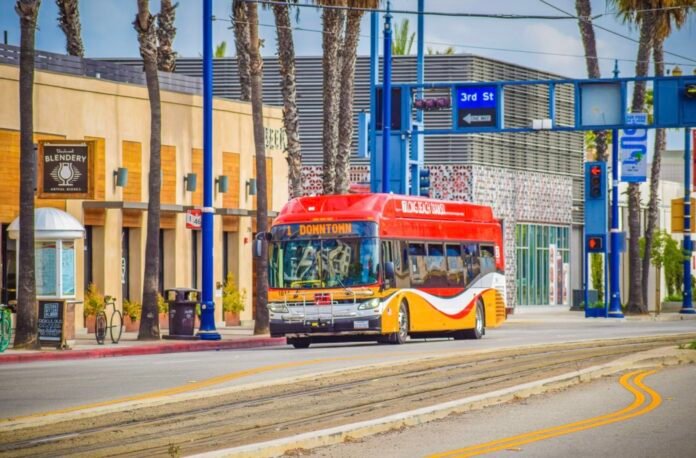UPDATE: All auxiliary agencies—including Long Beach Transit—have signed on in support of the Long Beach Values Act, which includes a stern lack of cooperation with ICE agents. For more on this, click here.
ORIGINAL ARTICLE: Long Beach Transit employees were issued a directive on June 23 instructing them on what to do if federal immigration agents attempt to board a bus, enter corporate offices, or access employee-only areas. And the overall message? Cooperate. First reported by Samantha Diaz at the Signal Hill Tribune, the news is not sitting well with immigrant rights advocates.
“This policy didn’t come out of nowhere,” said Mike Clemson, former LBT board chair and current planning commissioner. “It’s part of Trump’s bigger strategy of using immigration agents to scare immigrant communities… Local agencies like LBT are now faced with a difficult choice. Either cooperate with policies that harm people or push back in a manner that could put employees at risk. That’s not a real choice. It’s a trap. This divides communities, creates confusion, and leaves public servants to face the consequences, whether they’re moral, or legal, or even physical.”
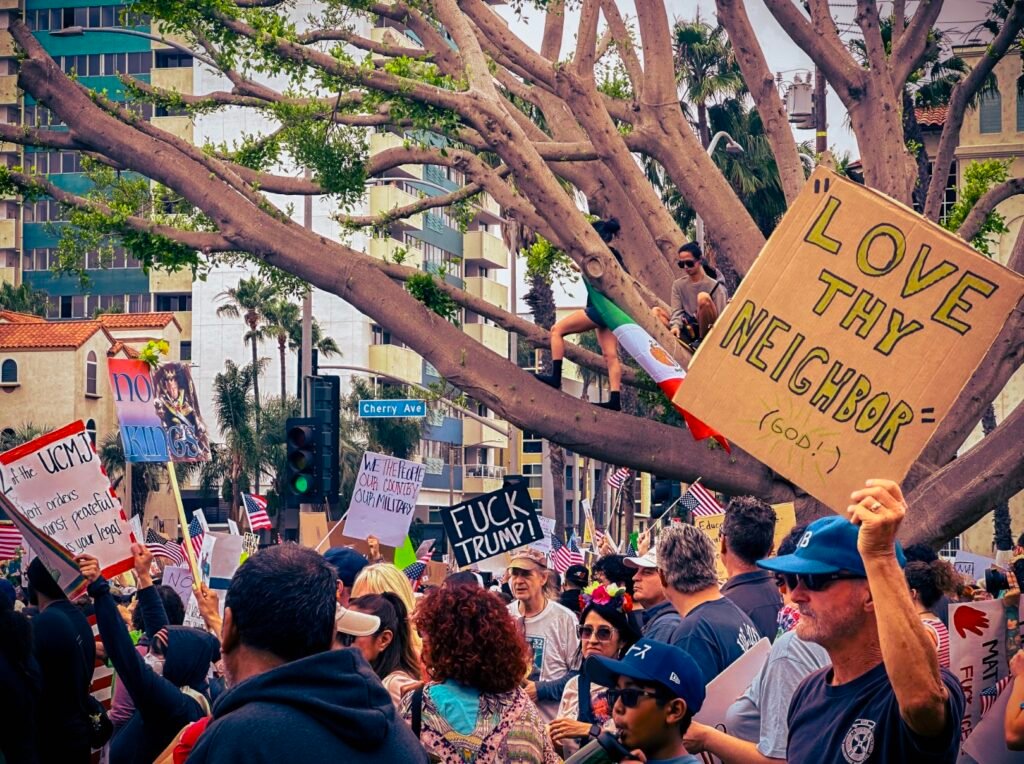
The city and its auxiliary agencies are at a moment where they must come face-to-face.
While the city passed and supported a more bulked-up version of the 2017 Values Act back in January of this year—which, in part, directs a stern non-cooperation with Immigration and Customs Enforcement (ICE) with city-owned and -operated entities—Long Beach Transit is an auxiliary agency separate from the city. An additional part of the update to the act includes that “each independent office and several external partner agencies [including LBT] commit to the Long Beach Values Act.” The city is awaiting responses from those entities. Richardson has also noted that he will “have an update” on Monday, July 7, at 3PM.
“It’s up to LBT to make sure drivers are trained to understand what ICE is required to show, such as warrants or identification,” Mike said. “We’ve seen everyday people defending the rights of their neighbors from overreach or misconduct. And LBT must give its workers the tools to do the same where it’s safe and legal to.”
While LBT claims it has seen no ICE activity within its system, the memo has sparked concern that—despite our sanctuary status—it’s creating a chilling effect on undocumented residents and immigrants who rely on public transportation. From gathering groceries to getting to work, undocumented residents are beginning to hole themselves inside for fear of being what many advocates are calling outright kidnapping.
“The recent kidnappings of immigrants in the streets make it deeply concerning that LBT employees would not question individuals claiming to be ICE agents before allowing them to remove passengers from public transportation,” said ÓRALE associate director Maribel, who asked to keep their last name redacted. “This essentially enables kidnapping on our public transit system.”
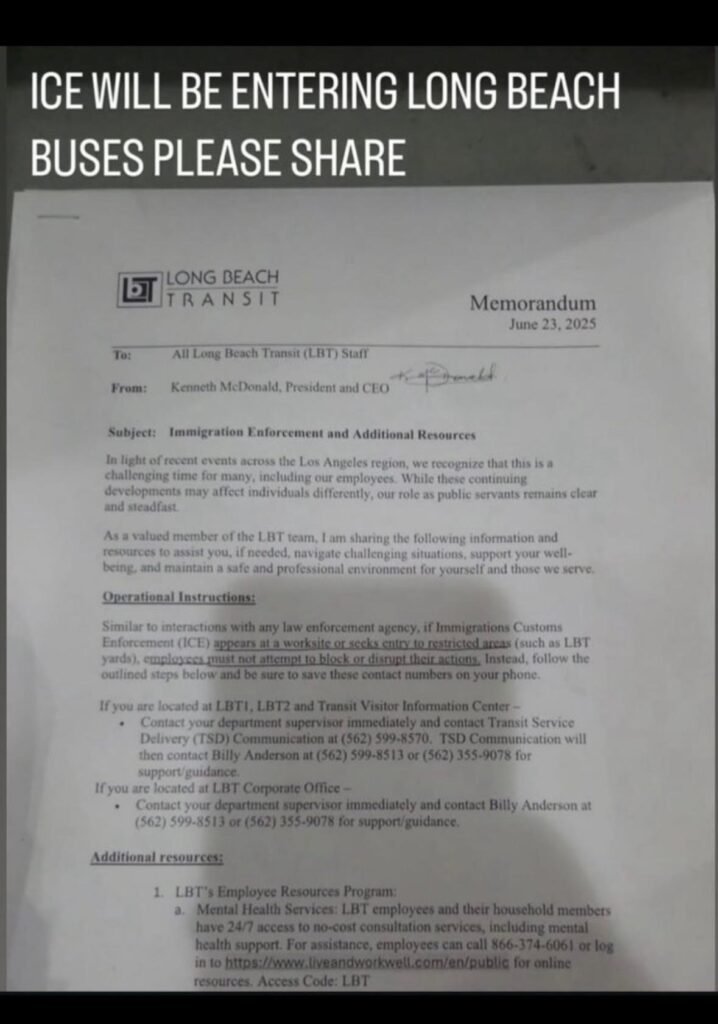
Long Beach Transit memo: “Must not attempt to block or disrupt” ICE actions
The June 23 memo, signed by Long Beach Transit CEO Kenneth McDonald, tells employees they are not to interfere with ICE. If ICE is to appear at “worksites or restricted areas like the LBT Yards,” employees “must not attempt to block or disrupt” agents. Of course, the major fear is that LBT employees will not seek or garner identification.
“Public transportation is critical for immigrants in our community,” Maribel said. “Buses are often their only reliable means of getting around the city. When Long Beach Transit allows unverified individuals to remove community members from buses without proper verification, it represents a serious breach of public safety. It abandons the transit system’s responsibility to protect all passengers.”
Even more, there are other allies to not force residents or employees into dangerous situations.
“There’s no easy answer here,” Mike said. “And I don’t think pointing fingers at LBT changes that. But there are places where action can make a bigger difference. We can keep the LBPD and County Sheriff from working with ICE. Or making sure the city’s immigrant legal defense fund has the money to protect our neighbors. We still have the power to stand together, protect workers, and stand up for the dignity and safety of everyone in our city.
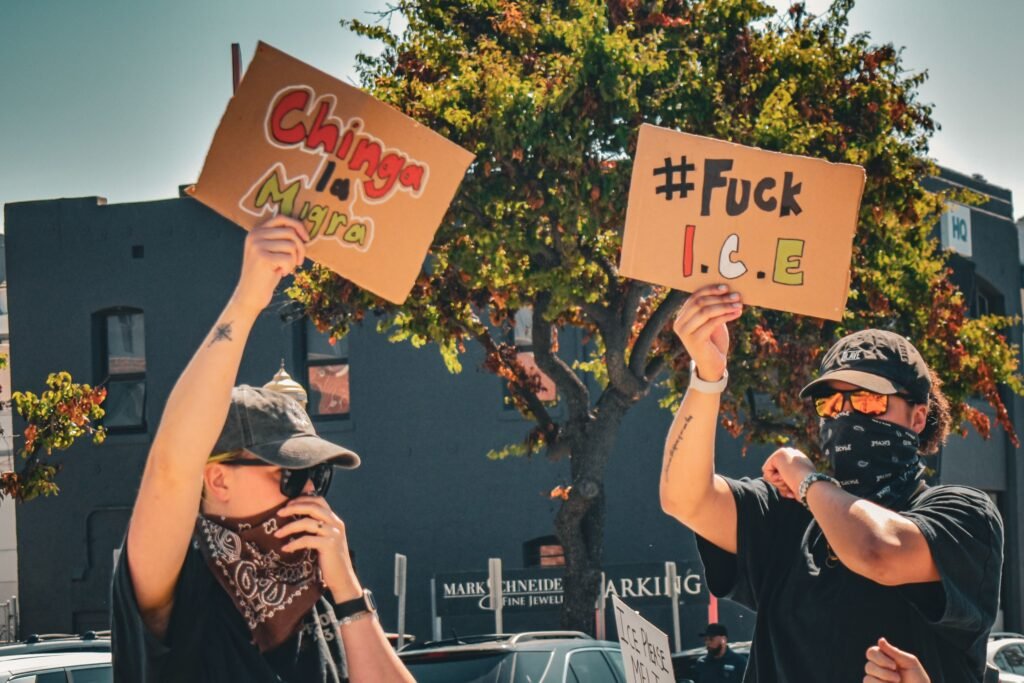
The transit agency’s response.
In an email correspondence with Arantxa Chavarria, manager of communications and marketing at Long Beach Transit, the following response to the memo was provided:
“As a public agency, we are committed to full compliance with all applicable laws. Our highest priority is the safety of our employees and customers, and serving the diverse and vibrant communities in our service area. We are deeply committed to fostering an inclusive and welcoming environment. As part of our standard operating procedures, the memorandum was focused on providing LBT employees with resources about what to do should they encounter any challenges with law enforcement onboard a bus or at a facility.
“At this time, we have no indication of ICE activity on our system.”
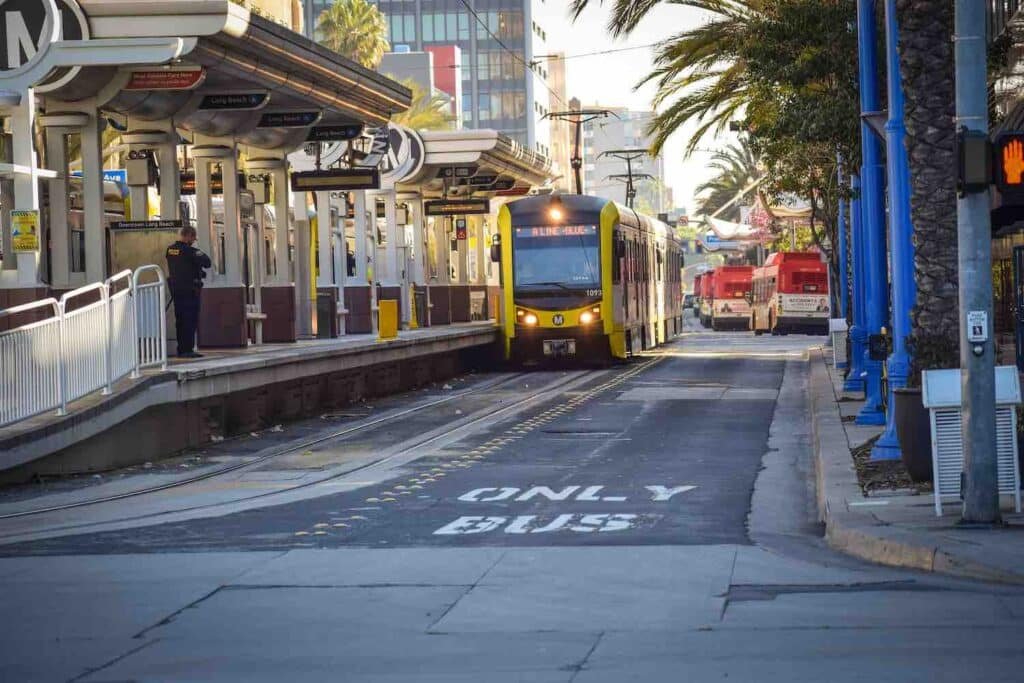
Metro Los Angeles issued similar memo to employees—with leadership calls to be more vigilant in defense of community.
In the wake of confirmed reports that ICE agents were spotted at the El Monte train station back in June, Los Angeles County Supervisor and Metro Board Chair Janice Hahn asked Metro for clarity on June 20. What exactly is Metro’s protocol when ICE shows up on public transit? Come June 26, it got its answer from Robert Gummer, deputy chief of security and law enforcement for Metro.
Gummer said that the agency has told employees not to “impede or interfere with law enforcement activities.” And to further report any such activity to the system’s operations and security teams. Gummer added that Metro will prevent ICE from entering “non-public areas absent a judicial warrant.”
Metro confirmed that immigration officers were, in fact, at the El Monte station on June 11 for roughly 10 minutes. According to County Supervisor Hilda Solis, Metro security said the agents were questioning individuals about their immigration status.
“No one should have to live in fear or be subjected to harassment while using public transportation,” Solis said. “Public transit must remain a safe space.”
In the eyes of advocates and riders alike, this policy gap feels increasingly precarious. This is especially true in a region that claims to be a sanctuary.
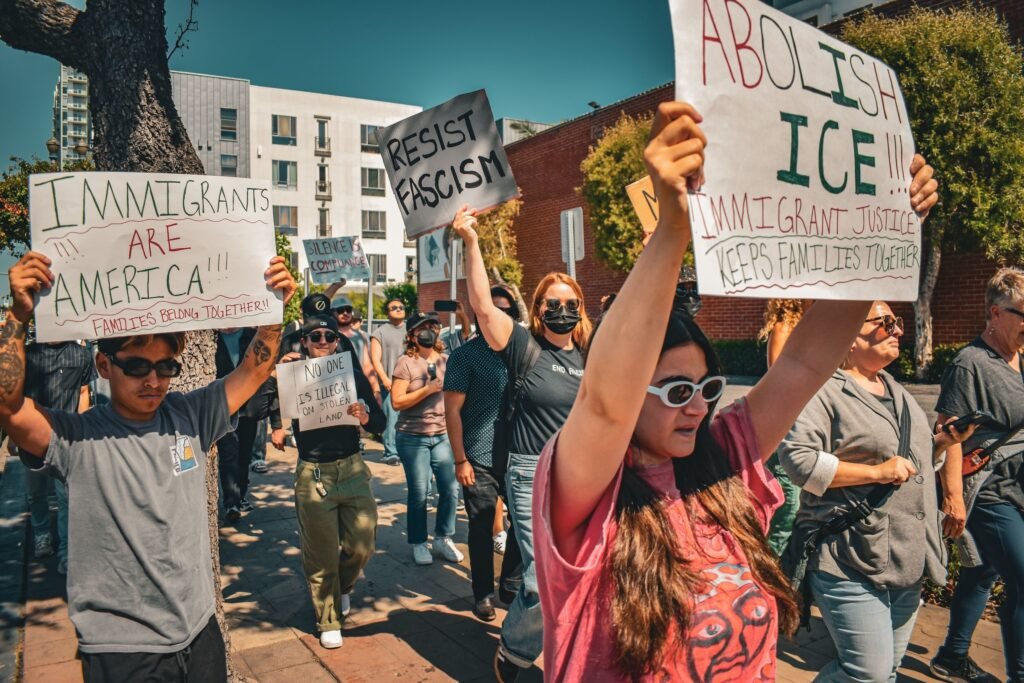
Long Beach Transit’s flimsy response to the memo sparks anger
Maintaining the memo is simply about procedure is not aligned with the vast majority of the community’s stance—which is ardently against ICE—or even city leadership, as Richardson has been vocal about Long Beach proudly remaining a sanctuary city and upholding our immigrant residents (despite their document status).
This comes as, echoing Mike, calls to expand the Long Beach Justice Fund—an immigrant legal defense fund created to offer free legal aid—grow louder. ÓRALE, the United Cambodian Community, and the Filipino Migrant Center have been pushing the city to increase its contribution by $2.2M. Mayor Rex Richardson has said any funding increase would have to follow the regular budget cycle, which ends in August. But with raids continuing, advocates and residents alike say that’s too late.
To community members, it doesn’t feel like protection. It feels like compliance—and, even worse, denigration. In the words of Gaby Hernandez to the Signal Hill Tribune, executive director of ÓRALE: “They call this a sanctuary city. So act like it.”

